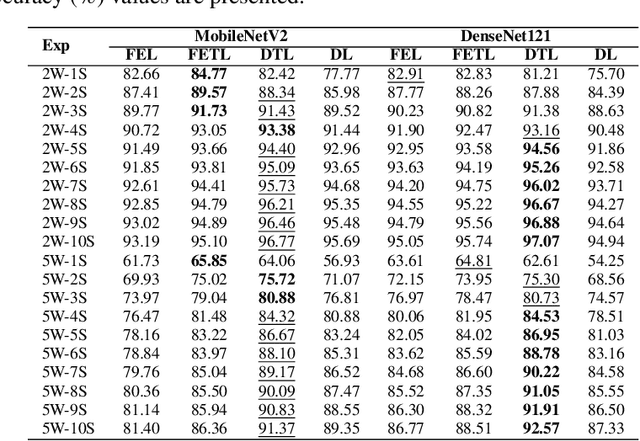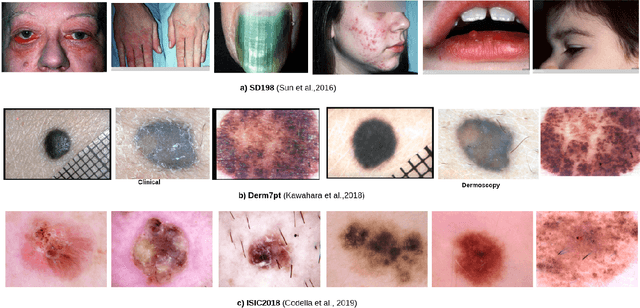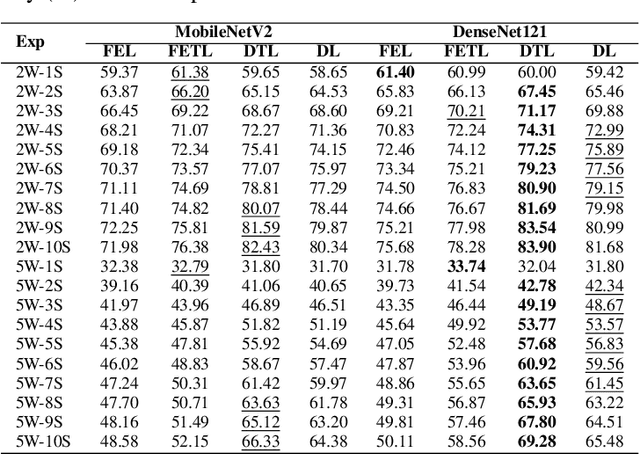Meta-Transfer Derm-Diagnosis: Exploring Few-Shot Learning and Transfer Learning for Skin Disease Classification in Long-Tail Distribution
Paper and Code
Apr 25, 2024



Addressing the challenges of rare diseases is difficult, especially with the limited number of reference images and a small patient population. This is more evident in rare skin diseases, where we encounter long-tailed data distributions that make it difficult to develop unbiased and broadly effective models. The diverse ways in which image datasets are gathered and their distinct purposes also add to these challenges. Our study conducts a detailed examination of the benefits and drawbacks of episodic and conventional training methodologies, adopting a few-shot learning approach alongside transfer learning. We evaluated our models using the ISIC2018, Derm7pt, and SD-198 datasets. With minimal labeled examples, our models showed substantial information gains and better performance compared to previously trained models. Our research emphasizes the improved ability to represent features in DenseNet121 and MobileNetV2 models, achieved by using pre-trained models on ImageNet to increase similarities within classes. Moreover, our experiments, ranging from 2-way to 5-way classifications with up to 10 examples, showed a growing success rate for traditional transfer learning methods as the number of examples increased. The addition of data augmentation techniques significantly improved our transfer learning based model performance, leading to higher performances than existing methods, especially in the SD-198 and ISIC2018 datasets. All source code related to this work will be made publicly available soon at the provided URL.
 Add to Chrome
Add to Chrome Add to Firefox
Add to Firefox Add to Edge
Add to Edge